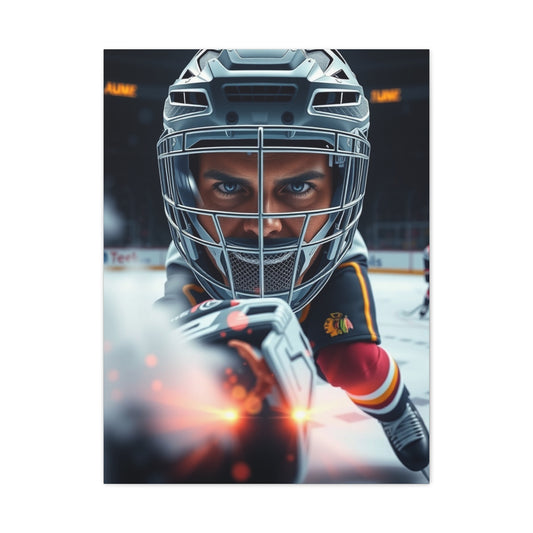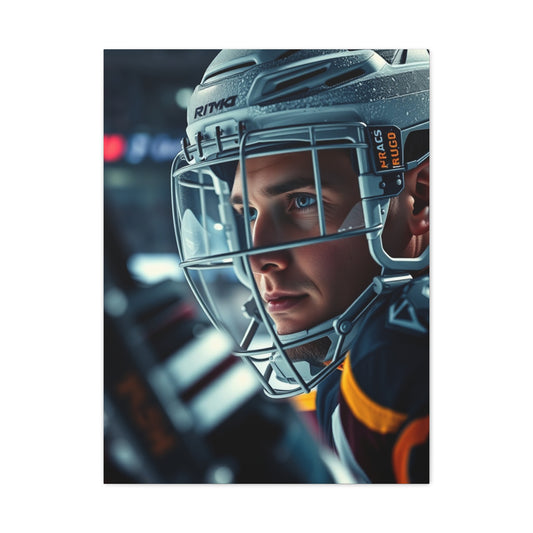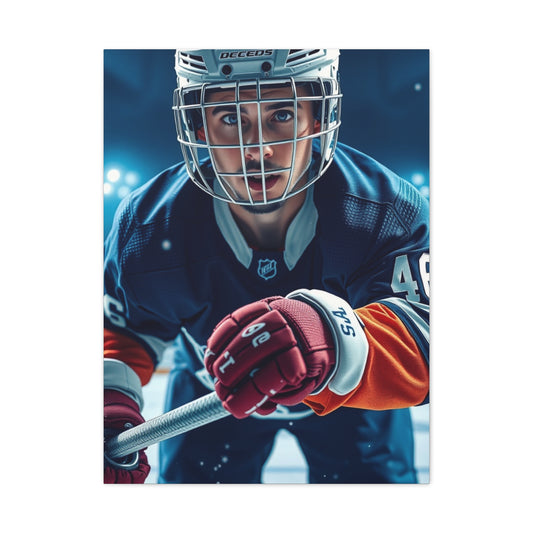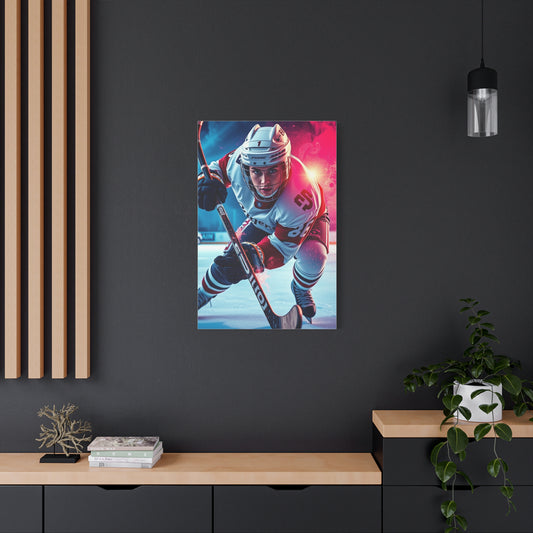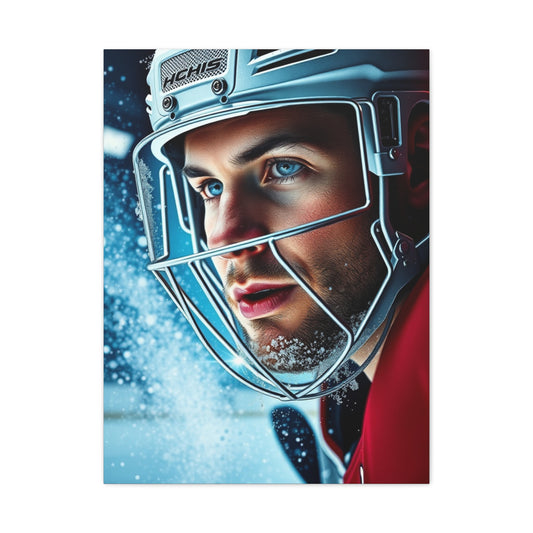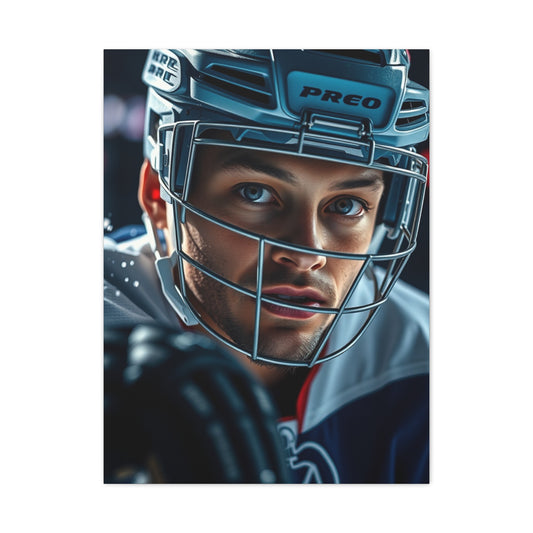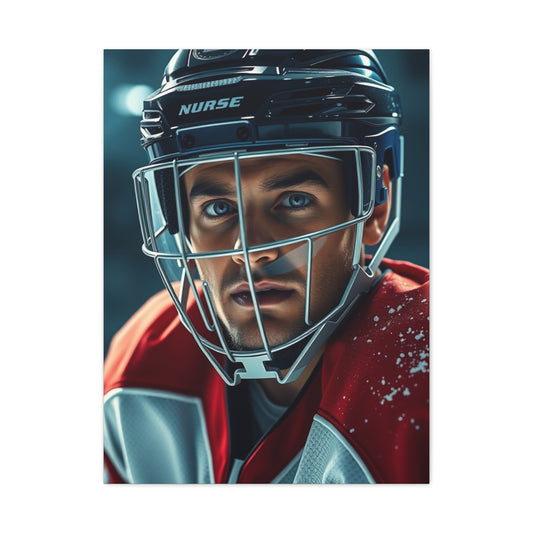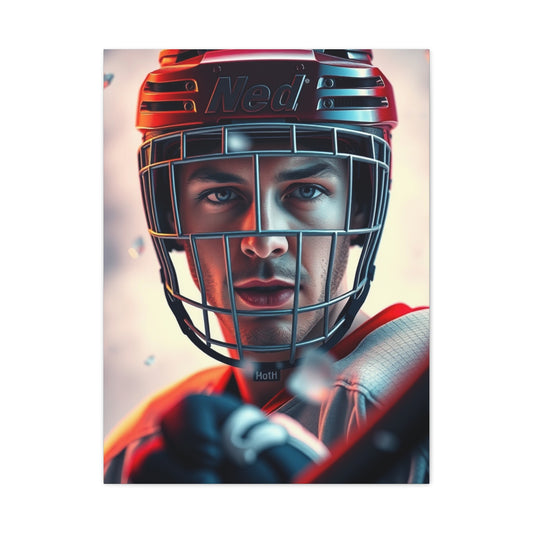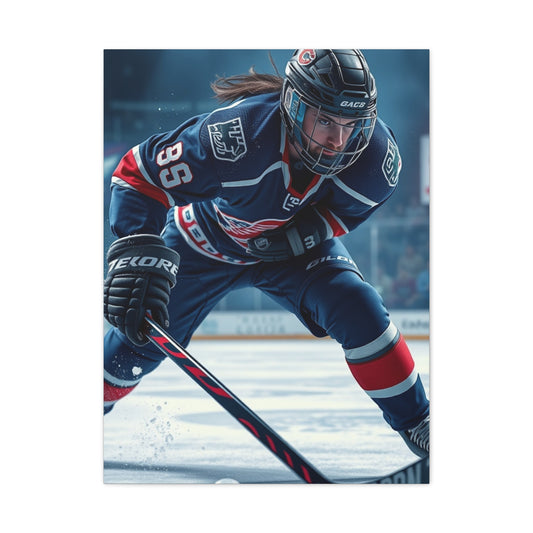-
Hockey Art Supreme Canvas Wall Art & Canvas Print
Regular price From $141.23 USDRegular priceUnit price per -
Hockey Art Luxury Canvas Wall Art & Canvas Print
Regular price From $141.23 USDRegular priceUnit price per -
Hockey Art Supreme Gallery Wall Art & Canvas Print
Regular price From $141.23 USDRegular priceUnit price per -
Hockey Art Refined Canvas Wall Art & Canvas Print
Regular price From $141.23 USDRegular priceUnit price per -
Vision Hockey Art Art Wall Art & Canvas Print
Regular price From $141.23 USDRegular priceUnit price per -
Collection Hockey Art Art Wall Art & Canvas Print
Regular price From $141.23 USDRegular priceUnit price per -
Elite Hockey Art Vision Wall Art & Canvas Print
Regular price From $141.23 USDRegular priceUnit price per -
Masterpiece Hockey Art Vision Wall Art & Canvas Print
Regular price From $141.23 USDRegular priceUnit price per -
Supreme Hockey Art Collection Wall Art & Canvas Print
Regular price From $141.23 USDRegular priceUnit price per
Unique Hockey Wall Art Designs for Every Room in Your Home
Hockey has always carried a unique energy, a blend of strategy, speed, and sheer athleticism that captivates those who follow the sport closely. For enthusiasts, this fascination often extends beyond the rink and into personal spaces, transforming rooms into vivid expressions of devotion. Hockey wall decor offers a compelling avenue for fans to encapsulate this spirit, providing an aesthetic that is both personal and visually striking. Integrating hockey elements into home design can turn an ordinary wall into a dynamic focal point, reflecting not only one’s allegiance to a team but also a deeper appreciation for the artistry of the game.
Decorating with hockey-themed pieces allows for a synthesis of creativity and fandom. Unlike conventional decor, hockey wall art can carry historical significance, encapsulate iconic moments, or even celebrate the achievements of beloved players. This makes it more than just decorative; it becomes narrative, each piece telling a story that resonates with both the casual observer and the ardent fan. Within the domain of wall decor, the possibilities are expansive. From framed jerseys to custom illustrations, there exists a spectrum of styles suitable for various tastes and interior designs.
One of the most compelling ways to integrate hockey into wall design is through framed jerseys. These pieces often serve as central statements within a room, capturing attention and sparking conversation. A framed jersey, particularly one signed by a player of personal significance, evokes a sense of intimacy and admiration. Choosing the right frame can enhance this effect, whether it is sleek and contemporary or richly ornate to complement a traditional living space. The jersey becomes more than memorabilia; it transforms into a curated art object that interacts with its environment. Proper placement, such as positioning above a media console or within a hallway gallery, can further elevate its visual impact.
Canvas prints offer another avenue for bringing hockey to the walls. Unlike framed jerseys, which focus on singular artifacts, canvas prints can capture action, emotion, and atmosphere in a more pictorial sense. High-resolution images of players in motion, dramatic moments from championships, or atmospheric depictions of rink interiors can infuse a space with energy and dynamism. Canvas prints can be scaled to suit room dimensions, from modest 12x18 pieces suitable for a study nook to expansive wall-hugging displays that dominate a living area. The choice of imagery allows for significant personalization. Some fans may gravitate toward vintage action shots, evoking nostalgia and the grandeur of past seasons, while others may prefer contemporary images that highlight modern athleticism and design.
Custom artwork represents the pinnacle of personalization in hockey wall decor. Commissioning or creating bespoke pieces ensures that the decor is singular, reflecting both the artist’s interpretation and the fan’s sensibilities. This can range from abstract renderings of a favorite team’s colors to intricate illustrations of legendary plays. In some cases, fans incorporate subtle symbolic elements that hold personal meaning, such as jersey numbers, specific arenas, or motifs tied to particular moments in hockey history. Such artwork can elevate a room’s aesthetic while maintaining a deep connection to the sport. A bespoke painting or drawing may also serve as a conversation starter, bridging artistic appreciation with sports enthusiasm.
Beyond traditional wall art, thematic integration can transform entire rooms into immersive hockey spaces. Painted murals, for instance, provide an expansive canvas for storytelling. A mural depicting a player executing a perfect slapshot, a panoramic view of a frozen arena, or even a stylized rendition of team emblems can radically alter a room’s ambiance. Unlike smaller framed pieces, murals dominate the visual field, creating an immersive experience. They can be rendered in realistic tones, using meticulous shading and perspective to convey depth, or through stylized interpretations that blend abstraction with recognizable motifs. Murals also offer opportunities to experiment with scale, perspective, and color in ways that conventional decor cannot.
Wall decals are a more flexible alternative to murals, especially in spaces where permanence or rental restrictions are a consideration. Removable decals featuring silhouettes of players, crossed sticks, pucks, or dynamic skates provide visual interest without requiring extensive commitment. These elements can be arranged in narrative sequences, suggesting motion across a wall, or clustered to create graphic focal points. The versatility of decals allows for layering, rotation, and repositioning, giving fans the freedom to refresh their space periodically. When combined with framed pieces or shadow boxes, decals contribute to a multidimensional aesthetic that balances movement with structure.
Shadow boxes offer another intriguing option for incorporating memorabilia into a three-dimensional display. By combining tangible artifacts with visual storytelling, shadow boxes create a tangible connection to the sport. They can house pucks, tickets, miniature sticks, photographs, or other collectibles, providing depth and texture to a room. Each item within a shadow box can be curated to reflect significant personal experiences, such as attending a memorable game or collecting memorabilia from a favorite player. The careful arrangement of items, the choice of backdrop material, and the inclusion of subtle lighting can enhance the display’s visual impact. Shadow boxes blend the functional aspect of storage with the narrative potential of art, offering a unique hybrid form of wall decor.
A crucial consideration when designing hockey-themed spaces is the creation of visual balance. Overcrowding a wall with memorabilia can dilute the impact of each piece, while sparse arrangements may fail to convey the vibrancy of the sport. Strategic placement, adherence to cohesive color palettes, and thoughtful integration of textures help achieve harmony. For example, combining a central framed jersey with surrounding canvas prints and subtle wall decals creates a tiered visual hierarchy. Similarly, a gallery wall composed of mixed media—photographs, plaques, shadow boxes, and artistic renderings—can draw the eye naturally across the composition, fostering both rhythm and narrative flow.
Hockey decor also offers the opportunity to incorporate unexpected elements, such as lighting and accent materials. Adjustable track lighting or picture lights can highlight individual pieces, casting shadows that add dimensionality and emphasizing the intricacy of the artwork. Reflective surfaces, metallic frames, or glass enclosures contribute to the sense of sophistication and draw attention to specific details. Incorporating elements like reclaimed wood panels, textured wallpapers, or subtle metal accents can create a tactile experience, contrasting smooth surfaces with rugged textures reminiscent of arena environments. These choices amplify the room’s character, transforming a simple wall into a multisensory environment that reflects the energy and atmosphere of hockey.
For enthusiasts who enjoy hands-on projects, DIY approaches to hockey wall decor allow for unmatched personalization. Repurposing old hockey sticks into shelves provides functional storage while celebrating the sport’s iconic equipment. Painting pucks to represent teams, players, or memorable seasons turns otherwise ordinary objects into visual storytelling devices. Creating photo collages from memorable games or personal experiences fosters emotional resonance and narrative depth. Such projects encourage experimentation, enabling fans to explore materials, colors, and arrangements in ways that reflect both individual creativity and passion for hockey.
Integrating hockey decor into smaller spaces requires particular sensitivity to scale and composition. Compact rooms benefit from smaller framed images, minimalist decals, or a single signature shadow box. Arranging pieces in a gallery format can maximize visual impact without overwhelming the environment, creating the illusion of depth and cohesion. In contrast, expansive spaces can accommodate larger murals, oversized prints, or multi-tiered displays that convey grandeur and movement. Considering sightlines, traffic patterns, and ambient light ensures that each element contributes to the overall ambiance rather than competing for attention.
Finally, blending hockey decor with broader interior design themes allows for a sophisticated, personalized aesthetic. Hockey elements can complement industrial loft styles, modern minimalism, rustic retreats, or eclectic spaces by thoughtfully integrating color palettes, textures, and spatial arrangements. The goal is not merely to showcase fandom but to craft an environment where the sport’s essence enhances the room’s character. When executed with care, hockey wall decor can evoke excitement, nostalgia, and pride, all while contributing to a cohesive and visually compelling home environment.
Designing Hockey-Themed Gallery Walls
Transforming a blank wall into a dynamic expression of hockey enthusiasm requires a balance of creativity, personal expression, and visual harmony. A hockey-themed gallery wall is a particularly effective approach, allowing fans to curate a collection of images, memorabilia, and artwork into a cohesive display that tells a story. Beyond mere decoration, such walls capture the spirit of the sport, commemorating iconic moments, players, and personal experiences. By carefully considering layout, scale, and thematic elements, a gallery wall can serve as both a visual centerpiece and a reflection of one’s dedication to hockey.
Creating a gallery wall begins with establishing a focal point. Often, this centerpiece is a framed jersey, an oversized canvas print, or a striking photograph that captures an iconic moment. The focal element anchors the display, providing a reference point around which other pieces can be arranged. Selecting the right centerpiece involves evaluating its visual weight, color palette, and thematic relevance. For instance, a jersey signed by a celebrated player can serve as both a conversation starter and a symbol of personal allegiance, while a large-scale action shot may convey the dynamic energy of the game.
Once the focal point is selected, surrounding elements can be arranged to complement and enhance the central piece. Smaller framed photos, plaques, or canvas prints featuring favorite players, memorable games, or historic events contribute layers of meaning to the display. Incorporating a variety of media—such as photographs, paintings, sketches, or plaques—creates visual texture and prevents monotony. The key is to maintain coherence through complementary colors, consistent framing styles, or thematic repetition, ensuring that the overall presentation remains harmonious rather than chaotic.
Personal memorabilia plays a critical role in elevating a hockey gallery wall. Items such as tickets, pucks, miniature sticks, or signed programs transform the wall from a purely visual experience into a multidimensional narrative. Shadow boxes provide an ideal format for combining these objects with photographs or small artwork, creating depth and interest. Thoughtful curation of memorabilia ensures that each item contributes meaningfully to the story being told, highlighting pivotal moments, personal achievements, or historical significance. Displaying items in clusters or groupings can also help organize the visual flow, guiding the eye naturally across the wall.
Balance and spacing are essential considerations when designing a gallery wall. Overcrowding the space with too many items can diminish the impact of individual pieces, while excessive spacing can make the arrangement feel sparse and disconnected. Using a combination of vertical and horizontal alignment, along with varying frame sizes, adds rhythm and movement to the composition. Maintaining consistent spacing between elements helps achieve visual cohesion, while occasional asymmetry can introduce energy and avoid rigidity. Mock layouts on the floor before committing to wall placement can be invaluable in visualizing the final effect.
Color coordination is another vital aspect of an effective gallery wall. Many hockey images and memorabilia contain vibrant tones, often dominated by team colors. Harmonizing these hues with the room’s overall palette ensures that the display integrates seamlessly into its environment. Neutral frames, mats, or backdrops can provide contrast, allowing colorful elements to stand out without overwhelming the space. For rooms with dynamic color schemes, limiting the palette of the gallery wall itself can prevent visual discord, creating a polished and intentional aesthetic.
Lighting further enhances the impact of a hockey-themed gallery wall. Adjustable track lighting, picture lights, or strategically positioned lamps can illuminate key pieces, emphasizing texture, detail, and depth. Proper lighting not only highlights individual elements but also establishes mood and atmosphere, evoking the excitement of the rink. Shadow effects, reflections, and subtle glare can all contribute to a sense of dimensionality, making the wall appear more dynamic. Consideration of natural light and its interaction with reflective surfaces ensures the display remains visually compelling throughout the day.
In addition to framed and memorabilia-based elements, thematic touches can enrich a gallery wall’s narrative. Small decals, artistic renderings, or abstract illustrations of players, pucks, or rink layouts can provide visual anchors that guide the viewer’s gaze. Incorporating subtle references, such as jersey numbers, team logos, or stylized representations of historic moments, adds layers of meaning without cluttering the visual field. These details allow the wall to convey both personal significance and broader connections to the sport’s culture and history.
Gallery walls also offer the opportunity to experiment with scale and proportion. Mixing large statement pieces with smaller accents introduces hierarchy and emphasis, drawing attention to focal points while providing context with surrounding elements. Vertical arrangements can make low ceilings appear taller, while horizontal compositions can create a sense of breadth and continuity. The interplay of scale, framing, and thematic content transforms a simple wall into a narrative landscape, where each element contributes to a larger story of passion, loyalty, and engagement with hockey.
For enthusiasts interested in hands-on customization, DIY approaches can further enhance a gallery wall. Crafting personalized frames, painting accent pieces, or designing bespoke prints ensures that the display is truly one-of-a-kind. Even small touches, such as adding subtle inscriptions, dates, or contextual notes, imbue the wall with personality and narrative depth. Combining commercially produced items with homemade creations fosters originality and maintains a balance between professional polish and personal expression.
Integrating hockey gallery walls into multi-functional spaces requires careful consideration. In living rooms, media rooms, or studies, the gallery wall should complement rather than compete with existing design elements. Placement relative to furniture, windows, or pathways ensures that the display contributes to the room’s overall flow. For spaces used primarily for entertainment or relaxation, a gallery wall can serve as a focal point that draws attention without dominating the environment. In more intimate areas, such as bedrooms or offices, the gallery wall can offer inspiration, nostalgia, or a personal connection to favorite moments in the sport.
For those working with limited wall space, creative adaptations allow for the same narrative impact. Compact gallery walls can employ smaller frames, minimalist shelving, or vertical arrangements that maximize visual impact without overwhelming the room. Rotating pieces periodically can refresh the display, providing variety and maintaining interest. Even a single shadow box or a carefully chosen framed print can serve as the nucleus of a miniature gallery, conveying the essence of a larger collection within a constrained environment.
Another approach is thematic segmentation, where different sections of a wall focus on specific aspects of hockey. One area might feature memorable games, another showcases favorite players, while a third emphasizes personal memorabilia. Segmenting the wall allows for clear storytelling while maintaining organization and clarity. Visual markers, such as framing styles, color backgrounds, or subtle dividers, help delineate these sections and guide viewers through the narrative sequence.
In addition to traditional two-dimensional arrangements, incorporating three-dimensional elements enhances the gallery wall’s complexity. Shadow boxes, protruding frames, or sculptural pieces such as small trophies or replicas can introduce depth and interaction. These elements create a tactile dimension, encouraging closer examination and fostering a more immersive experience. Combining flat artwork with three-dimensional objects reinforces the wall’s thematic cohesion while celebrating the multifaceted nature of hockey culture.
The process of curating a gallery wall is as important as the final product. Thoughtful selection, arrangement, and presentation imbue the display with meaning and coherence. Each choice, from framing and spacing to lighting and thematic emphasis, contributes to the narrative being conveyed. Over time, a gallery wall can evolve, incorporating new pieces, commemorating recent achievements, or reflecting shifting tastes, ensuring that the space remains dynamic and personally resonant.
DIY Hockey Wall Decor Projects
For devoted hockey enthusiasts, creating wall decor offers an opportunity to combine personal passion with artistic expression. Do-it-yourself projects not only allow for unique customization but also provide a tangible connection to the sport. By repurposing equipment, crafting artwork, or integrating memorabilia, fans can transform ordinary walls into dynamic displays that reflect both creativity and devotion. Engaging in DIY projects encourages experimentation with materials, color palettes, and spatial arrangements, resulting in decor that is as distinctive as the individuals who create it.
One of the most innovative approaches involves repurposing old hockey sticks into functional or decorative elements. Hockey stick shelves, for instance, offer a practical solution for displaying trophies, collectibles, or books. By securing sticks horizontally or vertically against a wall, they become both structural and aesthetic components. Sanding and refinishing the wood, adding metallic brackets, or painting the sticks in team colors can further enhance visual appeal. Beyond shelving, sticks can also be transformed into frames, wall-mounted sculptures, or even abstract geometric patterns, introducing a tactile dimension to the space.
Customized puck art provides another avenue for creative expression. Pucks, inherently symbolic of the game, can be painted or engraved to represent specific teams, players, or memorable seasons. Arranging pucks in grids, clusters, or linear patterns creates visually striking installations that are both thematic and sculptural. Incorporating additional elements, such as subtle background panels, shadow effects, or embedded lighting, amplifies the artistic impact. Fans may also experiment with mixed-media techniques, combining pucks with paint, photographs, or metallic accents to produce multi-layered pieces that evoke motion and energy.
Photo collages offer a deeply personal form of wall decor, blending memories with artistry. Compiling images from significant games, historic moments, or personal experiences creates a narrative that is both visually appealing and emotionally resonant. Techniques such as layering photographs, adding decorative borders, or integrating text annotations allow for customization and storytelling. Collages can be framed as a single unit or arranged as part of a larger gallery wall, complementing other elements like jerseys, canvas prints, or shadow boxes. The resulting display captures the essence of hockey fandom while preserving cherished memories.
DIY projects also extend to creating three-dimensional displays using memorabilia. Shadow boxes, for example, can house tickets, mini helmets, or commemorative items, blending functional storage with visual storytelling. Fans may incorporate fabric backdrops, textured surfaces, or subtle lighting to highlight key pieces. Multi-tiered shadow boxes allow for the inclusion of diverse objects while maintaining cohesion, and arranging multiple boxes in a deliberate pattern contributes to an overall narrative structure. Such installations transform flat walls into interactive experiences, inviting closer engagement and exploration.
Creative painting projects can further personalize a hockey-inspired room. Murals depicting players in motion, stylized team logos, or abstract interpretations of rink dynamics offer immersive and visually arresting displays. For smaller spaces, accent walls with hand-painted motifs, subtle silhouettes, or geometric patterns provide a similar effect without overwhelming the room. Fans may also experiment with stencils, metallic paints, or mixed-media techniques to introduce texture and depth. Through thoughtful application of color, scale, and perspective, painted elements can convey movement, energy, and thematic coherence, turning a simple wall into a narrative tableau.
Shelving systems inspired by hockey equipment extend beyond simple sticks. Netting, miniature goals, or rink-inspired shelving units can create playful, thematic storage solutions. Combining these elements with collectibles, trophies, or books encourages interaction while reinforcing the hockey theme. Fans may also integrate lighting within shelving units, highlighting key items and creating focal points that draw the eye. Such creative use of equipment transforms functional storage into an artistic statement, merging utility with aesthetic appeal.
In addition to structural projects, fans can engage in paper-based or fabric DIY endeavors. Framing custom-designed posters, embroidery pieces, or quilted wall hangings allows for unique, handcrafted decor. These techniques enable subtle personalization, incorporating specific team colors, logos, or player references. The tactile quality of fabric or layered paper adds dimension to the wall, offering contrast to traditional framed images or canvas prints. Combining multiple textures within a single display fosters a rich sensory experience, reinforcing the narrative of fandom through varied visual and material elements.
Lighting and placement are crucial when incorporating DIY projects into hockey-themed walls. Adjustable spotlights, LED strips, or accent lamps can emphasize textures, highlight key objects, and create visual depth. Fans may also consider the interaction of natural light with reflective surfaces, such as glossed pucks or framed jerseys, enhancing vibrancy and mood. Proper positioning ensures that each element contributes meaningfully to the overall composition, preventing clutter while maintaining dynamic visual interest.
DIY projects encourage the ongoing evolution of wall decor. Unlike static, pre-purchased items, handmade or customized elements can be updated, rearranged, or replaced over time. Fans may rotate displays to reflect current seasons, new memorabilia, or evolving artistic preferences. This flexibility fosters engagement with both the sport and the decor itself, maintaining freshness and personal relevance. Periodically revisiting the arrangement allows for experimentation with scale, spacing, and thematic groupings, ensuring that the wall remains a living, evolving tribute to hockey.
Beyond individual projects, thematic cohesion is essential for creating a visually compelling wall. Coordinating color palettes, frame styles, and display patterns enhances unity, while introducing subtle variations prevents monotony. For instance, combining metallic frames with wooden shadow boxes and painted elements creates an interplay of textures, reflecting both sophistication and energy. Fans may also employ repetition of specific motifs—such as team colors, player silhouettes, or puck arrangements—to create rhythm and continuity, guiding the viewer’s eye naturally across the display.
Integrating DIY projects with existing room design amplifies both aesthetic appeal and thematic resonance. Hockey-inspired elements can complement modern, industrial, rustic, or eclectic interiors by aligning color schemes, materials, and spatial arrangements. Functional spaces such as studies, media rooms, or home offices benefit from decor that balances thematic impact with usability, providing visual interest without overwhelming the environment. Even smaller spaces, including apartments or dorm rooms, can adopt scaled-down DIY projects that retain narrative power while respecting spatial limitations.
For those seeking more avant-garde or abstract approaches, DIY projects allow exploration of unorthodox materials and techniques. Incorporating reclaimed wood, metal, resin, or unconventional textures can produce sculptural or hybrid pieces that challenge traditional notions of wall decor. Fans may experiment with layering, transparency, or mixed-media installations to evoke movement, tension, or kinetic energy reminiscent of the game itself. Such projects transform walls into experiential environments, where the decor’s conceptual depth parallels the sport’s dynamic complexity.
Collaborative DIY projects offer a communal aspect to hockey-themed decor. Families, friends, or teams can contribute to creating murals, collages, or assembled installations, fostering shared ownership and enhancing sentimental value. This collaborative approach may incorporate personal stories, group experiences, or collective memorabilia, reinforcing bonds while producing a wall display rich with narrative depth. The process itself becomes part of the decor, embedding layers of meaning beyond the visual impact alone.
Maintenance and durability considerations are also relevant for DIY installations. Protective coatings on painted surfaces, secure mounting for shadow boxes or shelves, and careful handling of memorabilia ensure longevity and preservation. Thoughtful placement away from high-traffic areas, direct sunlight, or moisture protects both aesthetic quality and structural integrity. Incorporating these practical measures alongside creative design maintains the wall’s appeal over time, allowing it to serve as a lasting tribute to hockey enthusiasm.
Incorporating Hockey Themes Into Your Walls
Hockey-inspired wall decor offers endless possibilities for transforming a room into a tribute to the sport, blending artistry, personal expression, and thematic cohesion. Moving beyond single pieces or gallery walls, integrating broader hockey elements throughout a space allows fans to immerse themselves fully in the energy, movement, and history of the game. Thoughtful planning, creative techniques, and strategic placement ensure that walls become both visually striking and narratively rich, reflecting personal enthusiasm without overwhelming the room’s overall aesthetic.
One of the most compelling ways to integrate hockey themes is through painted murals. Murals provide expansive canvases for storytelling, allowing fans to depict iconic moments, stylized player movements, or abstract representations of the sport’s energy. Large-scale illustrations of slapshots, goal celebrations, or team logos can dominate a wall, creating immersive environments reminiscent of stadiums or historic arenas. The process of designing and executing a mural encourages creativity, experimentation with perspective, and attention to detail. Fans can choose realistic depictions with nuanced shading, stylized interpretations emphasizing movement, or minimalist abstractions that convey form and energy through simplified shapes.
Wall decals offer a versatile alternative for those seeking flexibility or temporary installations. Removable decals featuring hockey sticks, pucks, player silhouettes, or team emblems allow for easy arrangement and repositioning. This adaptability is ideal for evolving interests, seasonal changes, or rental spaces, providing visual impact without permanence. Decals can be clustered to simulate motion, arranged linearly to suggest progression, or interspersed with framed artwork for layered compositions. Their graphic nature complements other elements, creating rhythm and cohesion across the wall without dominating the visual field.
Shadow boxes remain a central tool for thematic integration. By combining three-dimensional memorabilia such as mini helmets, tickets, or signed pucks, shadow boxes bridge the gap between visual art and tactile storytelling. Layering these elements alongside painted murals or decals introduces depth and texture, encouraging closer examination and interaction. The arrangement of multiple shadow boxes, whether in symmetrical patterns or dynamic clusters, contributes to a cohesive narrative that celebrates both personal memories and broader hockey culture.
Integrating multiple thematic elements requires attention to balance, scale, and spatial hierarchy. Large murals or dominant focal pieces anchor the composition, while smaller accents—such as decals, framed prints, or shadow boxes—support the overall design. Alternating vertical and horizontal alignments, varying frame sizes, and maintaining consistent spacing help achieve visual harmony. Asymmetry can be employed deliberately to evoke energy and motion, echoing the dynamism inherent in hockey itself. The interplay of these elements transforms walls into multidimensional experiences, engaging viewers through both narrative and aesthetic appeal.
Lighting plays a critical role in amplifying the impact of hockey-themed walls. Adjustable spotlights, picture lights, or LED strips can highlight key features, enhancing texture, color, and depth. For murals, directional lighting accentuates brushwork, perspective, and movement, while subtle illumination of decals and shadow boxes draws attention to individual components. Consideration of natural light ensures that reflective surfaces, metallic frames, and glossy finishes maintain vibrancy throughout the day. Thoughtful lighting transforms static decor into a living environment, evoking the ambiance and excitement of the rink.
Creative use of materials enhances thematic integration. Painted walls may incorporate textures resembling ice, wood, or arena boards, providing tactile resonance with the sport. Metallic or glass accents, reflective surfaces, and polished frames contribute sophistication and contrast, while natural wood or matte finishes introduce warmth and depth. By experimenting with textures, fans can evoke the multisensory experience of hockey, translating the sport’s physicality and visual dynamism into a stationary display.
Incorporating hockey motifs into entire rooms encourages thematic continuity and narrative cohesion. For example, a media room may feature murals depicting iconic players alongside shadow boxes of memorabilia, creating an immersive viewing environment. In studies or offices, decals and framed prints provide subtle nods to the sport, integrating personal passion without overwhelming the workspace. Even compact spaces benefit from scaled-down thematic elements, such as miniature murals, small decals, or singular shadow boxes, allowing fans to convey enthusiasm while respecting spatial limitations.
DIY adaptations enhance the versatility of thematic integration. Fans can personalize murals by including specific players, memorable games, or custom color schemes. Decals may be hand-painted or modified to reflect evolving preferences, while shadow boxes can be rearranged or expanded to incorporate new memorabilia. This iterative approach ensures that walls remain dynamic and personally meaningful, reflecting both ongoing engagement with the sport and individual artistic exploration.
Thematic layering creates depth and visual interest. Combining flat artwork with three-dimensional elements, using decals as background accents for shadow boxes, or positioning murals as overarching backdrops allows walls to convey multiple narrative layers simultaneously. Such arrangements mimic the complexity of a hockey game, where motion, strategy, and individual skill intersect. By translating these dynamics into a spatial composition, fans can evoke energy, rhythm, and storytelling within the static medium of wall decor.
Attention to color palettes ensures cohesion and visual harmony. Hockey imagery is often vibrant, dominated by team colors or contrasting uniforms. Selecting complementary background tones, consistent frame styles, or unified accent elements prevents visual dissonance. Neutral backdrops allow vibrant artwork or memorabilia to stand out, while coordinated hues can unify disparate elements into a cohesive presentation. Subtle repetition of motifs, such as pucks, sticks, or player silhouettes, reinforces thematic continuity without appearing monotonous.
Integrating hockey decor with broader interior design principles enhances aesthetic appeal and spatial functionality. Fans may consider room proportions, sightlines, and focal points when arranging murals, decals, or shadow boxes. In living areas, thematic walls serve as conversation starters and visual anchors, while in private spaces, decor can provide inspiration, nostalgia, or motivation. Harmonizing hockey-themed walls with furniture, lighting, and color schemes ensures that the sport’s energy complements rather than conflicts with the room’s overall design.
Small spaces present unique challenges and opportunities. Compact rooms benefit from vertical arrangements, minimalist murals, or strategically placed decals that maximize visual impact without overcrowding. Singular focal pieces, such as a framed jersey or a custom shadow box, can anchor the design effectively. Rotating elements, introducing seasonal updates, or combining multifunctional decor ensures that even limited walls remain expressive and engaging. Clever use of mirrors or reflective surfaces can also amplify spatial perception, enhancing the immersive quality of hockey-themed decor.
Advanced thematic integration may involve interactive or kinetic elements. For example, movable frames, modular shadow boxes, or adjustable lighting can introduce variability, creating a dynamic experience that changes with the observer’s perspective. Fans may also experiment with mixed-media installations, combining painting, decals, sculptural elements, and memorabilia into hybrid compositions. These approaches transform walls from static displays into engaging environments, capturing the motion, strategy, and excitement inherent in hockey.
Incorporating personal narratives into hockey-themed walls adds emotional resonance. Displaying memorabilia from significant games, photographs of personal achievements, or artifacts linked to cherished experiences bridges the gap between fandom and storytelling. Combining personal items with historical references, iconic images, or stylized artwork creates layers of meaning, transforming walls into immersive chronicles of both individual and collective engagement with the sport. Such curation encourages reflection, nostalgia, and pride while enriching the aesthetic impact of the decor.
Blending Hockey Decor With Other Themes and Maintaining a Cohesive Space
Creating a room that celebrates hockey does not necessitate exclusivity; integrating hockey-themed decor with other design elements allows for a sophisticated, personalized, and cohesive environment. Combining sport-inspired features with complementary aesthetics requires careful planning, balance, and creativity, ensuring that the space reflects multiple interests while maintaining visual harmony. Beyond simple placement of memorabilia, blending themes encompasses color coordination, material selection, spatial arrangement, and long-term maintenance, resulting in a room that is dynamic, functional, and uniquely expressive.
One of the most effective ways to blend hockey decor with broader themes is through color integration. Hockey imagery is often bold and vibrant, dominated by team colors or contrasting uniforms. Aligning these colors with existing room palettes creates cohesion without diminishing impact. Neutral tones, such as whites, grays, or muted woods, serve as stabilizing backdrops, allowing decorative elements to stand out. For instance, a wall with vibrant team murals can be balanced by subdued furniture and flooring, while accent pillows, throws, or rugs echoing team colors provide subtle thematic continuity. Thoughtful color pairing maintains energy without overwhelming the senses.
Material selection also contributes significantly to cohesive design. Mixing textures such as wood, metal, glass, and fabric introduces depth while reflecting the physicality of hockey. Wooden frames or shadow boxes evoke warmth and tradition, while metallic or glass elements suggest modernity and athletic precision. Incorporating these materials across different thematic layers—walls, shelving, and furniture—ensures a unified aesthetic. For example, a wall featuring a mural of a frozen rink can be complemented by brushed metal shelving for trophies, combining visual and tactile elements that reinforce the sport’s energy.
Spatial arrangement is key when blending hockey decor with other design motifs. Positioning focal pieces in alignment with architectural features—such as windows, doorways, or built-in shelving—ensures balance and flow. A central framed jersey may anchor the composition, surrounded by complementary artwork, personal memorabilia, or decorative accents from other themes. The interplay of scale, orientation, and spacing establishes hierarchy, guiding the eye naturally while maintaining harmony between diverse elements. This approach allows multiple interests to coexist without clutter, preserving both aesthetic clarity and narrative cohesion.
Incorporating multifunctional elements further enhances the integration of hockey decor. Shelving units made from repurposed hockey sticks, for example, provide storage while contributing thematically to the room. Shadow boxes housing memorabilia double as display art, bridging personal expression with functional design. Even interactive pieces, such as modular wall-mounted panels or rotating framed prints, enable adaptability and flexibility, allowing the decor to evolve alongside changing interests or seasonal updates. This approach fosters longevity, ensuring that the room remains dynamic and personally meaningful.
Lighting plays a critical role in harmonizing diverse themes. Strategic illumination highlights key hockey elements while creating visual continuity across the space. Track lighting, recessed spotlights, or accent lamps emphasize focal points, enhancing depth and texture. Adjusting light intensity and direction allows fans to draw attention to specific pieces without overpowering complementary decor. Natural light should also be considered, with reflective surfaces and glass accents enhancing vibrancy during the day. Layered lighting provides both functionality and aesthetic appeal, maintaining balance between sport-focused features and other thematic elements.
For small spaces, integrating hockey decor requires ingenuity and restraint. Compact rooms benefit from vertical arrangements, minimalistic displays, and multifunctional pieces. A singular focal wall can incorporate a framed jersey, a small mural, and subtle decals, providing thematic impact without overcrowding. Wall-mounted shelving, shadow boxes, or small-scale memorabilia collections maximize vertical space, creating visual interest while preserving floor area. Modular or rotational elements, such as interchangeable prints or removable decals, allow for periodic updates, ensuring that limited walls remain expressive and engaging.
Personal memorabilia continues to serve as a bridge between themes, contributing narrative depth and emotional resonance. Incorporating items such as game tickets, photographs, or small collectibles alongside decor from other interests fosters a layered, multidimensional environment. Thoughtful curation ensures that each object contributes meaningfully to the room’s overall story. Combining hockey artifacts with complementary decorative elements—such as artistic pieces, travel mementos, or abstract designs—enriches the visual experience, creating a cohesive space that reflects the full spectrum of personal identity.
Maintaining the integrity and longevity of hockey-themed decor requires attention to care and preservation. Framed prints and murals should be shielded from excessive moisture and direct sunlight to prevent fading or deterioration. Shadow boxes and shelving units need secure mounting to protect fragile memorabilia. Painted surfaces, including murals and custom wall accents, benefit from protective coatings or varnishes to preserve color vibrancy and texture. Regular dusting, careful handling, and periodic inspection ensure that each element remains visually appealing and structurally sound over time.
Layered thematic integration also involves balancing motion and stillness within the decor. Hockey’s inherent dynamism can be evoked through action-oriented imagery, stylized player silhouettes, or flowing mural compositions. Complementary themes, such as minimalist art, abstract patterns, or geometric arrangements, provide counterpoints that stabilize visual energy. This juxtaposition allows the room to convey both excitement and serenity, maintaining harmony between expressive sport elements and other design motifs.
DIY elements enhance thematic blending by enabling personalization and flexibility. Fans may create custom artwork, modify decals, or design unique shadow boxes that bridge hockey and complementary themes. Hand-painted accents, repurposed equipment, or mixed-media pieces allow for experimentation with textures, color schemes, and spatial arrangements. This approach produces a truly individualized environment, reflecting both artistic creativity and deep engagement with the sport. Furthermore, DIY integration fosters adaptability, permitting incremental updates as interests evolve.
Another aspect of thematic cohesion is storytelling. Arranging hockey decor alongside complementary elements creates visual narratives that convey layered meaning. For example, a room may feature a mural depicting a historic game alongside travel souvenirs from arenas visited, or framed prints of players paired with abstract artwork echoing motion and strategy. Each element contributes to a broader narrative arc, enriching the room with depth and personal significance. This narrative approach transforms walls from static displays into immersive experiences, where design, memory, and passion intersect.
Practical considerations enhance usability without compromising aesthetic appeal. In multifunctional spaces, maintaining pathways, furniture functionality, and accessible storage ensures that hockey decor coexists harmoniously with everyday activity. Lightweight, removable, or modular pieces offer flexibility, allowing reconfiguration as needed. Small-scale lighting and strategically placed mirrors amplify perception of space and light, integrating thematic elements seamlessly. Thoughtful attention to these details ensures that the room is both expressive and livable, balancing sport-focused design with practical requirements.
Thematic layering and repetition contribute to rhythm and visual coherence. Repeating motifs such as player silhouettes, sticks, or pucks across walls, furniture, and accessories creates consistency, while variation in scale or texture maintains interest. Alternating horizontal and vertical arrangements, mixing two- and three-dimensional elements, and combining static and dynamic visuals fosters a sense of movement and vitality. This rhythmic interplay mirrors the game itself, translating hockey’s kinetic energy into a stationary, visually engaging environment.
Finally, long-term adaptability ensures that hockey-themed rooms remain relevant and fresh. Fans can update murals, decals, framed prints, or shadow boxes as seasons change, new memorabilia is acquired, or design preferences evolve. Rotational displays, interchangeable elements, and modular installations allow for easy refreshment while preserving thematic integrity. By designing spaces with flexibility in mind, enthusiasts create environments that grow alongside their passion for hockey, reflecting both current interests and lasting devotion.
Conclusion
Hockey wall decor offers a unique and versatile way for enthusiasts to bring the energy, history, and artistry of the sport into their personal spaces. From framed jerseys and canvas prints to murals, decals, shadow boxes, and DIY projects, each element contributes to a dynamic, narrative-rich environment that reflects passion and creativity. Thoughtful curation, attention to balance, color harmony, and spatial arrangement ensure that hockey-themed decor complements broader interior design while maintaining visual impact. Incorporating personal memorabilia and custom pieces adds emotional depth, transforming walls into immersive stories that celebrate memorable games, favorite players, and personal experiences. Flexibility through modular displays, removable decals, and adaptable lighting allows spaces to evolve alongside changing interests. Ultimately, whether in compact apartments, media rooms, or expansive living areas, hockey wall decor transforms ordinary walls into engaging arenas, merging aesthetic appeal with devotion to the sport, creating spaces that are both vibrant and meaningful.

